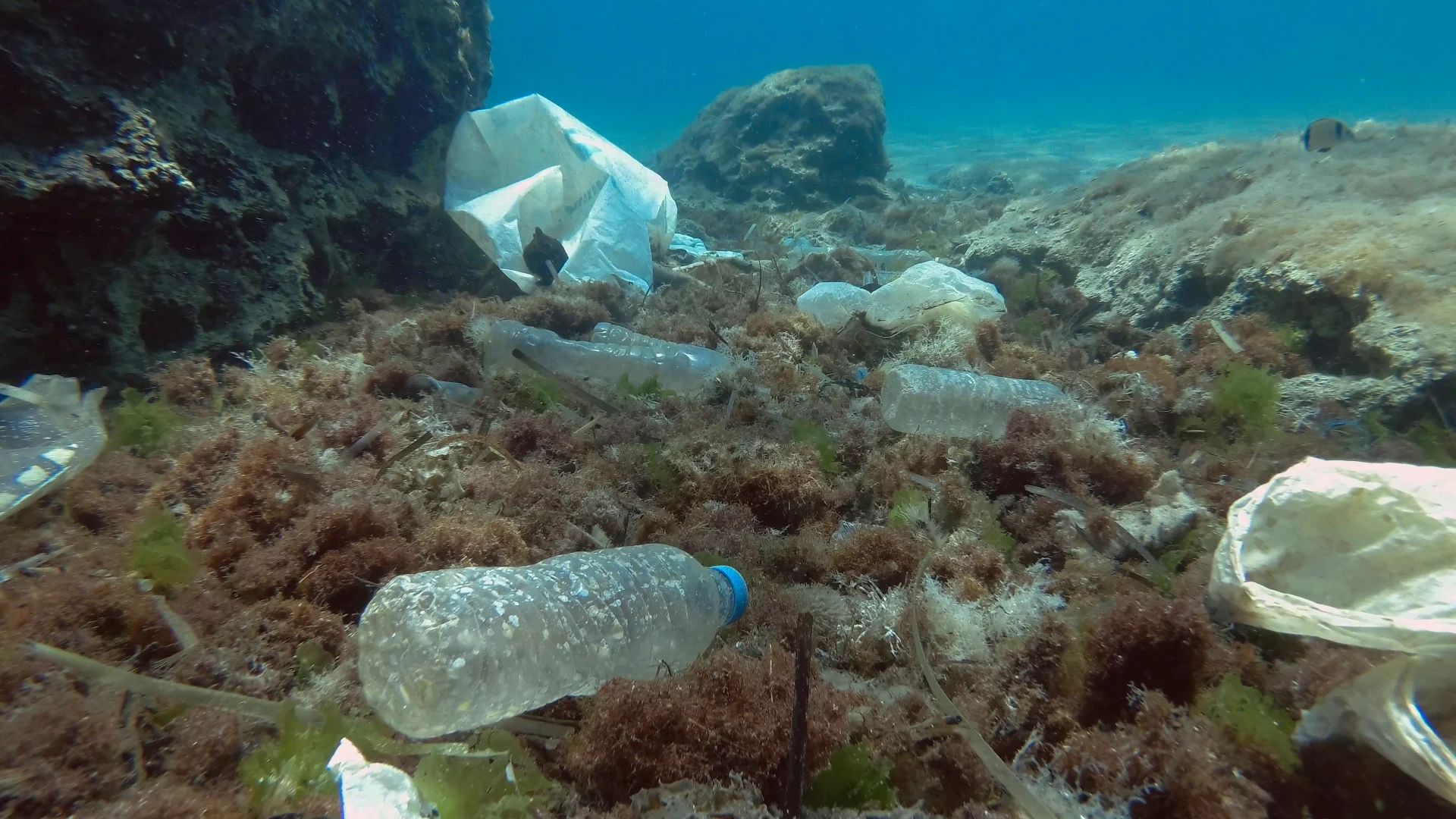
These ten plastic products account for 75% of all litter items in the ocean
Avoiding plastic take-out items is one individual action that the researchers recommend for addressing the plastic pollution crisis.
Can you guess what is the most common type of plastic waste that is found in the oceans?
Perhaps you guessed straws, an item that is slowly being replaced by those made out of paper or metal. Despite the widespread attention straws receive, it is actually not even in the top four most common plastic items that are damaging marine ecosystems.
A study published by several international research institutions and NGOs now gives us a clear image of the human-made littler that is ending up in the oceans. The study reveals that single-use bags, bottles, food containers, and wrappers are the four most widespread litter items in marine ecosystems.

Plastic waste washed up from the sea lays on a beach in Crete, Greece. (Nick Brundle Photography. Moment. Getty Images)
“Waste from take-out consumption of convenience food and beverage largely dominates global litter,” says the study’s press release. Approximately 80 per cent of all litter entering the oceans is made of plastic and of the 112 litter categories used in their study (e.g. plastic, wood, metal, paper), just ten plastic products accounted for 75 per cent of all garbage items found in the Earth’s oceans.
Similarly, a report from Ocean Wise and the World Wildlife Fund (WWF) says that the proportion of single-use food packaging litter found on Canadian shorelines nearly doubled in 2020.
These findings are concerning to say the least, but the researchers say that their work provides “much-needed” information that can be used to create and enhance pollution prevention policies and can help us choose which items we should consume less frequently.
“The irresponsible production of throwaway plastic goods, the careless behavior by some end-users, and the flaws in recovery systems, lead to a continuous leakage of plastic into nature. This input, together with the persistence of plastic materials, explain the overwhelming prevalence of plastic in the ocean,” the press release says.
The data was collected before the COVID-19 and subsequent tsunami of PPE and other protective plastic items began being rapidly consumed. A different study published in February estimated that roughly 3.4 billion single-use face masks or face shields are discarded each day, highlighting the urgent need for reusable or non-plastic PPE.
Despite the disheartening findings, there is an increasing momentum amongst governments and stakeholders that is aiming to reduce pollution and promote non-plastic alternatives. One individual action that the researchers recommend is avoiding take-out plastic products, given their findings that show these items appear too frequently in oceans.
The study provides ten recommendations that can help solve plastic pollution and better protect marine ecosystems. These recommendations include: the creation of more funding schemes that support new startups and collaboration between industry experts and the scientific community to develop prototype solutions for commercial product providers, improved monitoring, increased litter collection, and stronger policies from governments and the commercial industry that prevent plastic pollution.
Thumbnail credit: Andriy Nekrasov. iStock / Getty Images Plus







